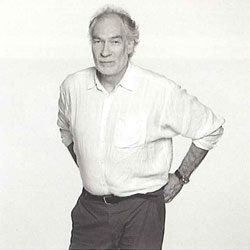Michael Biberstein
Michael BibersteinSuíça ¶ 1948
 |
|
| Créditos fotográficos / Photographic credits: Abílio Leitão |
He established himself in Portugal in the late 70s. Since then he has had a full-fledged career, quite noticeably in Portugal, but also abroad. ¶ When he first began painting, around the mid-70s, Biberstein gave preference to a reductionist approach, in which representation was limited to a mere few abstract elements. He explored the meaningful potential of subtle variations with these elements. ¶ At the same time, this method was applied to the exhibiting space itself, and painting would become thus one element among many in an installation. Throughout the 70s, the artist would dedicate himself to the research of the very constitutive elements of the act of painting, both formally and conceptually, and he displaced them from an implicit plane to an explicit one. ¶ Although only fully and plainly expressed at a later stage, this goal was already present in his research into how the representation processes are prone to lead to a transcendent change in the beholder's state of mind. However, it is a paradoxical goal, for it puts what one could call the spiritual efficiency of visual forms through a systematic analysis. ¶ Biberstein's works left this analytical attitude behind by the mid-80s, and moved towards a psychological approach of the viewer. By making landscape painting his primary theme, the artist questions notions of Beauty and Sublimity, and aims at an auratic reception of the work of art that is built upon the visible/invisible dichotomy, which he masters very skillfully. ¶ As in a crossbreeding of the Faustian tradition of Romantic landscaping and the stylizing influence of Eastern scroll painting, the author creates huge, melancholic-ridden landscapes tinted with an ineffable Wagnerian minimalism. By bringing to his own contemporary world these two traditions of landscape painting, the Romantic and the Chinese, Biberstein also carries over to his own time the possibility of transcending the artistic object. ¶ Thoughout the 90s, Biberstein's painting explored the common grounds of landscape and abstract painting, arriving at an ever-systematic, intricate management of colour. This has become the true protagonist of his most recent canvases.
http://cvc.instituto-camoes.pt/biografias-en/michael-biberstein-7900-dp2.html#sigFreeIda7b0610cd5


